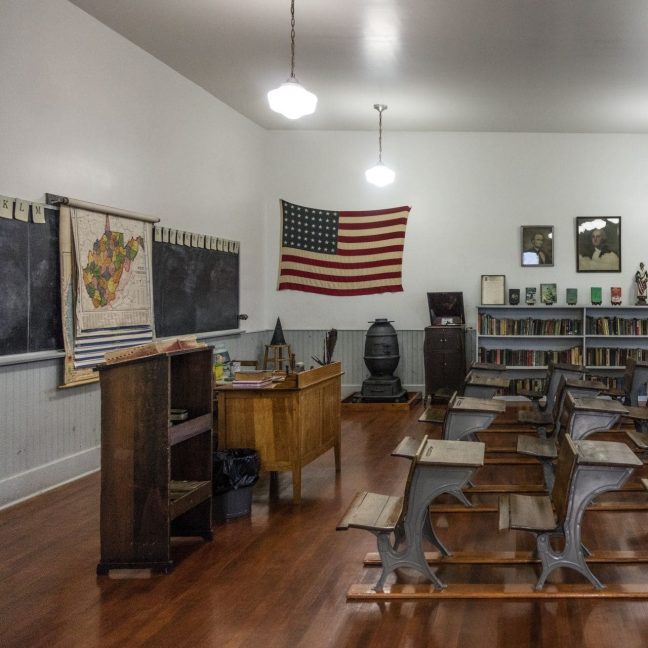I’ve always been fascinated by the old one-room schools. I think it all started when my younger sister and I would walk up our country road and play for hours on the site of an old school, long since abandoned. That school must have educated every boy and girl for miles around, and those children grew up to be postal carriers, soldiers, bankers, farmers, and teachers.
One-Room Schools Help Students Apply What They’ve Learned
In that school and others like it, students from multiple age groups and grade levels worked and learned together. In many instances, older students taught younger ones, with the teacher providing guidance as needed. Classics frequently served in the place of textbooks, and students applied what they were learning in the context of what was relevant to their lives. They developed a body of knowledge, but even more importantly, they learned how to apply that knowledge to solve problems.
It was a simpler time, and yet many of the methods found in those one-room schools were ahead of their time. Today we often hear about new techniques and methods for helping students learn. We talk about concepts such as competency-based, proficiency-based, and personalized learning.
The Birthplace of Competency-Based Education
As an extension of the home school environment, one-room schools were the birthplace of competency-based education. And the new performance assessments that are gaining so much attention? Students in one-room schools had to demonstrate what they knew through projects. For example, students planted an herb garden appropriate for local soil. They raised goats for meat and dairy and made apple butter. Students built a machine shed that could stand up to wind while others demonstrated first aid techniques.
Like the competency-based educational model, Simousek points out that most one-room schools adhered to the “time is variable/learning is constant” mantra, whereby learners worked until they could successfully demonstrate their proficiency before moving on. In other words, what students learn is more important than how quickly they learn it.
One-Room Schools in the US Today
There are actually still a few hundred one-room schools in the United States today. Many are located in very rural and remote areas. However, educators in Gainsville, Florida started a charter school in 1997 specifically with the one-room school model in mind. Focusing on meeting the needs of high achievers, the One Room School House Project (ORSH) serves students through eighth grade. In addition, some modern-day homeschools are perfect venues for the one-room schoolhouse model.
Recognizing the benefits of larger schools today, we should consider the advantages of smaller schools designed around the one-room schoolhouse model. Even in our fast-paced, mobile society, we still need schools that serve as community anchors. In times of crisis such as the one we are currently experiencing with COVID-19, a return back to a simpler structure such as one-room schools may be worth a second look.
###
About the Author: Dr. Roberta Ross-Fisher has expertise in higher education quality assurance, educator preparation, and competency-based education. A former public school teacher and college administrator, Roberta is now an educational consultant specializing in the Council for the Accreditation of Educator Preparation (CAEP).
Email: Roberta@globaleducationalconsulting.com
Top Graphic Credit: Pixabay



